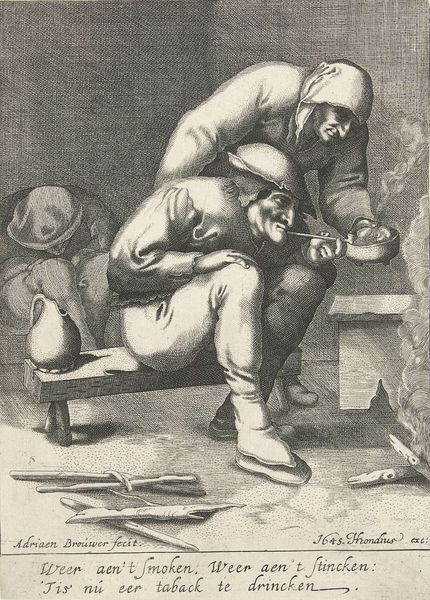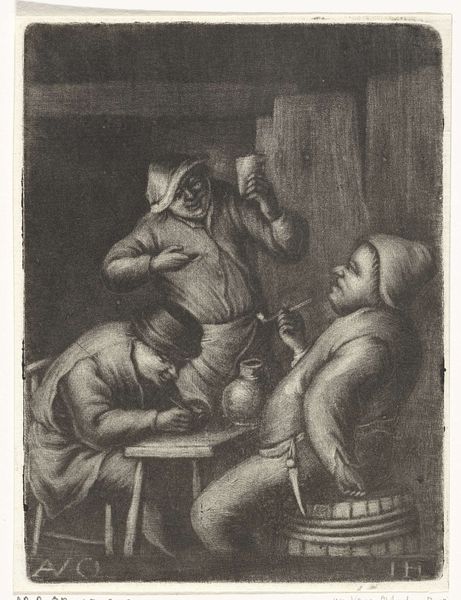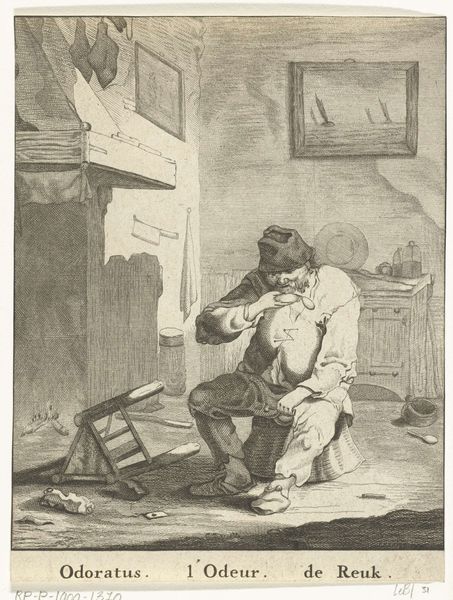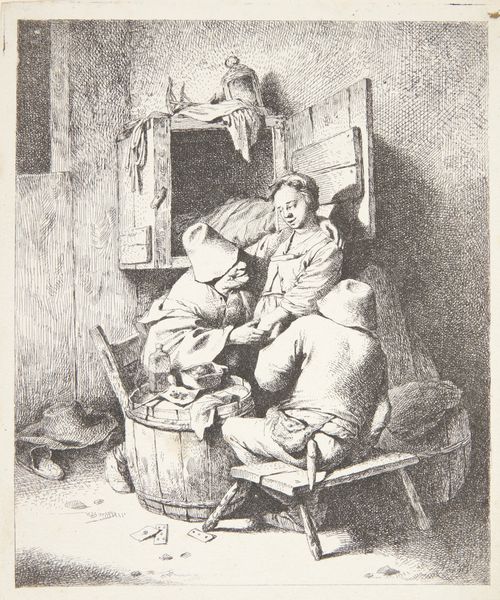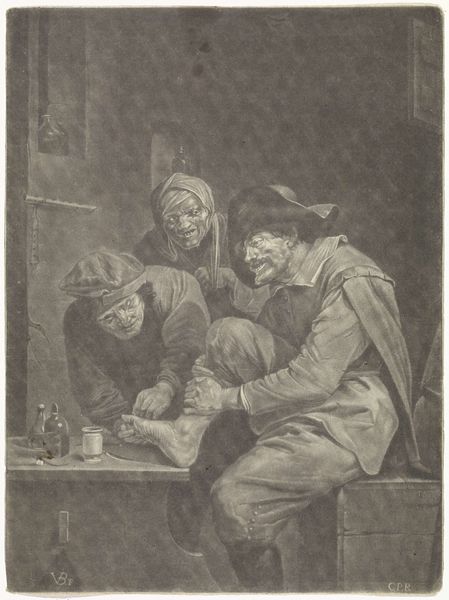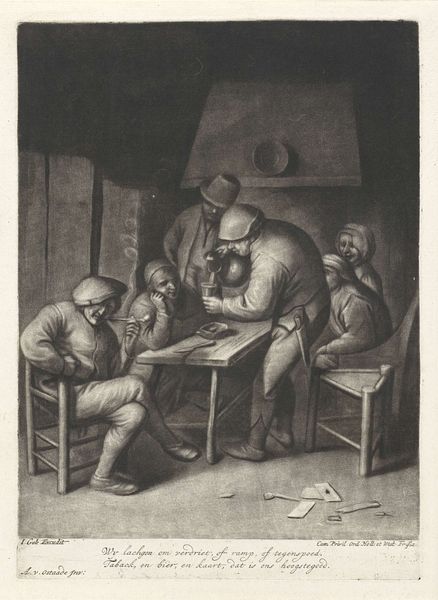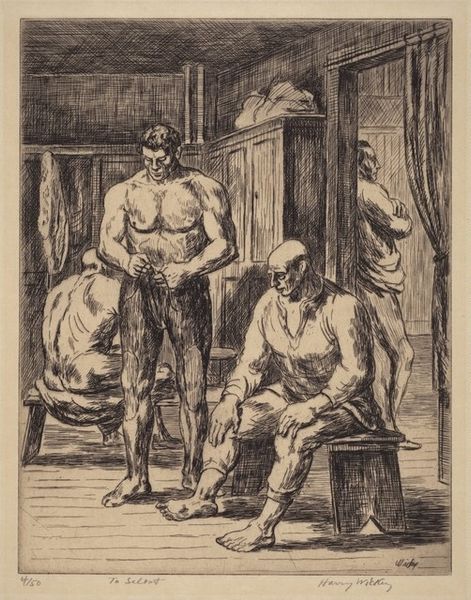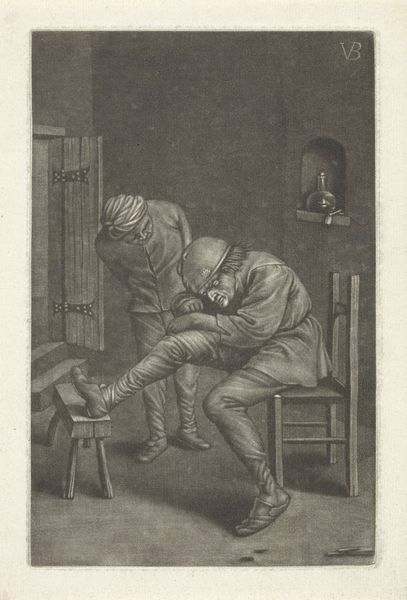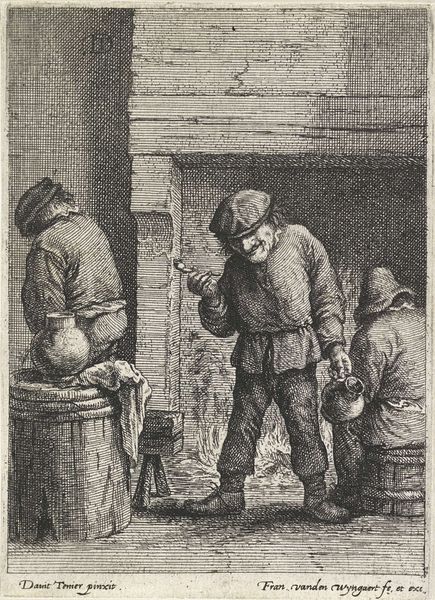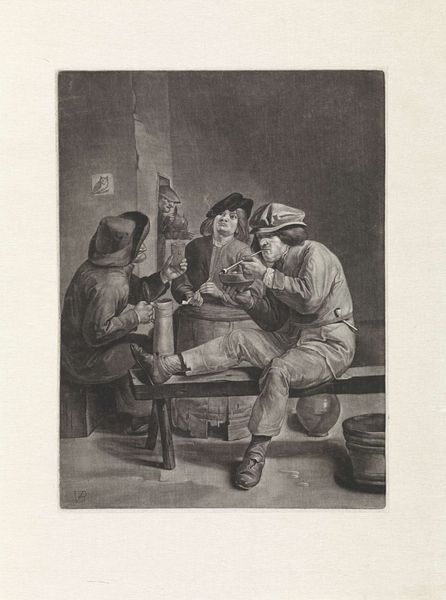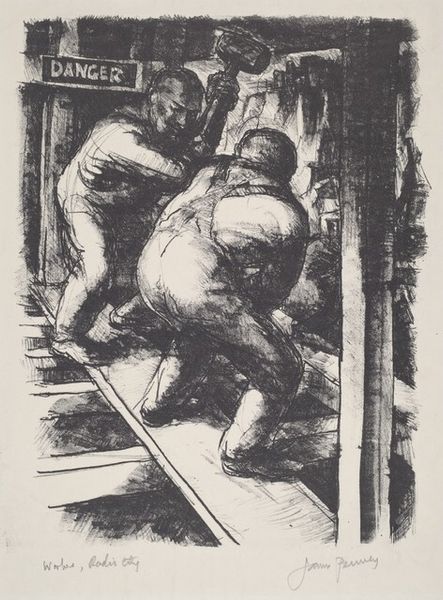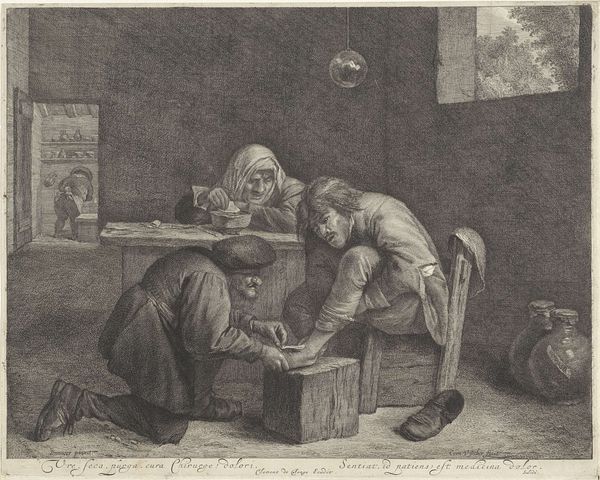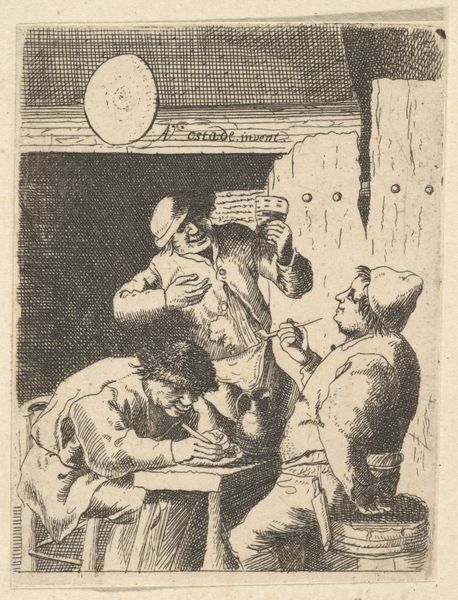
drawing, engraving
#
portrait
#
pencil drawn
#
drawing
#
facial expression drawing
#
light pencil work
#
pencil sketch
#
caricature
#
personal sketchbook
#
portrait reference
#
idea generation sketch
#
portrait drawing
#
pencil work
#
genre-painting
#
engraving
Dimensions: height 186 mm, width 147 mm
Copyright: Rijks Museum: Open Domain
Editor: This engraving, "Man Behandelt een Boer aan zijn Voet"—or "Man Treating a Farmer's Foot"—dating from between 1622 and 1688, depicts what appears to be a somewhat painful medical procedure! There's a raw, immediate quality to it. What can you tell us about this depiction of everyday life in the 17th century through art? Curator: It’s fascinating to consider the public role of images like this in that period. This print doesn't idealize rural life, does it? Instead, it displays an unflinching view of the bodily realities of working people. What kind of statement do you think this makes in terms of the art world’s relationship to different social classes at the time? Editor: Well, the art world was often associated with the wealthy. So, an image like this feels almost subversive, shining a light on a population often ignored or romanticized. Was there a market for these genre scenes that pushed against the established order? Curator: Exactly. The rise of the Dutch Republic saw the emergence of a wealthy merchant class, interested in seeing their own values of hard work and realism reflected in art. Think about the patronage and how that shift could influence the types of subject matter deemed worthy of artistic representation. It also gives a human dimension to people who where otherwise unseen. Do you find that the emotional impact of this type of social realism persists even now? Editor: Absolutely. It challenges the viewer, regardless of the century, to confront the realities of physical labor and healthcare access for all members of society. I see now this genre paintings not only as snapshots of daily existence, but also social commentaries. Curator: Indeed. The way we interpret it today says just as much about us as it does about the period. These historical representations are very powerful documents of both then and now.
Comments
No comments
Be the first to comment and join the conversation on the ultimate creative platform.
